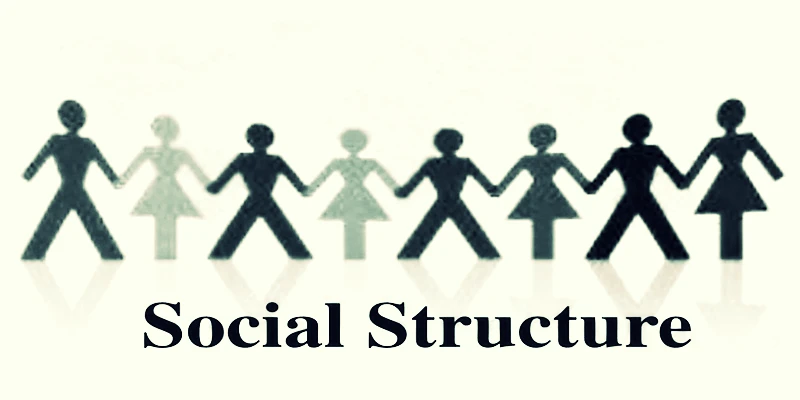Social structure is the organized set of social institutions and patterns of institutional relationships that together make up society. Social structure gives you the ability to interpret the social situations you encounter. Let’s understand the concept of social structure as a model in sociology.
The Concept of Social Structure As A Model in Sociology

What is Social Structure?
Social structure refers to the model adopted by the system of relationships that are generated between individuals within a society.
Social structure is the stable and characteristic distribution of institutions through which human beings in a society interact and live together.
The concept of social structure is often used in conjunction with the concept of social change, which addresses the forces that change the social structure and organization of society.
The origin of contemporary social references to social structure can be traced to Émile Durkheim, who argued that the parts of society are interconnected and that this interdependence imposes structure on the behavior of institutions and their members.
The study of the social structure can detect different nuances or trends in each community. There are four major types of social structure, depending on the aspect that dominates it: the economy, the family, religion and politics.
Studies of social structure attempt to explain issues such as integration and trends in inequality. In studying these phenomena, sociologists look at organizations, social categories (such as age groups), or rates (for example, crime or birth). This approach, sometimes called formal sociology, is not directly concerned with individual behavior or interpersonal interaction.
There are some observations that must be made about the general aspects of the social structure of any society.
Social life is structured along the dimensions of time and space. Specific social activities take place at specific times. Specific social activities are also organized at specific locations. Besides, in any society, there is a more or less regular division of labor. Furthermore, in any society, there are arrangements within the social structure for sexual reproduction and the care and education of the young.
Finally, symbolic communication systems, particularly language, structure the interactions between members of any society.
There are several ideas implicit in the concept of social structure:
First, human beings form social relationships that are not arbitrary and coincidental but rather exhibit a certain regularity and continuity.
Second, social life is not chaotic and formless but is in fact differentiated into certain groups, positions, and institutions that are interdependent or functionally interrelated.
Third, individual choices are shaped and circumscribed by the social environment, because social groups, although constituted by the social activities of individuals, are not a direct result of the desires and intentions of individual members.
In other words, the concept of social structure means that human beings are not completely free and autonomous in their choices and actions, but rather they are constrained by the social world in which they live and the social relationships they form with each other.
There is an enormous diversity of social forms between and within societies. Some social scientists use the concept of social structure as a model to create an order for the various aspects of social life. In studies, the concept is of greater theoretical importance; it is considered an explanatory model, a key to the understanding of human social life. Various theories have been developed to explain both the similarities and the varieties. In these theories, certain aspects of social life are considered basic and therefore central components of the social structure.



